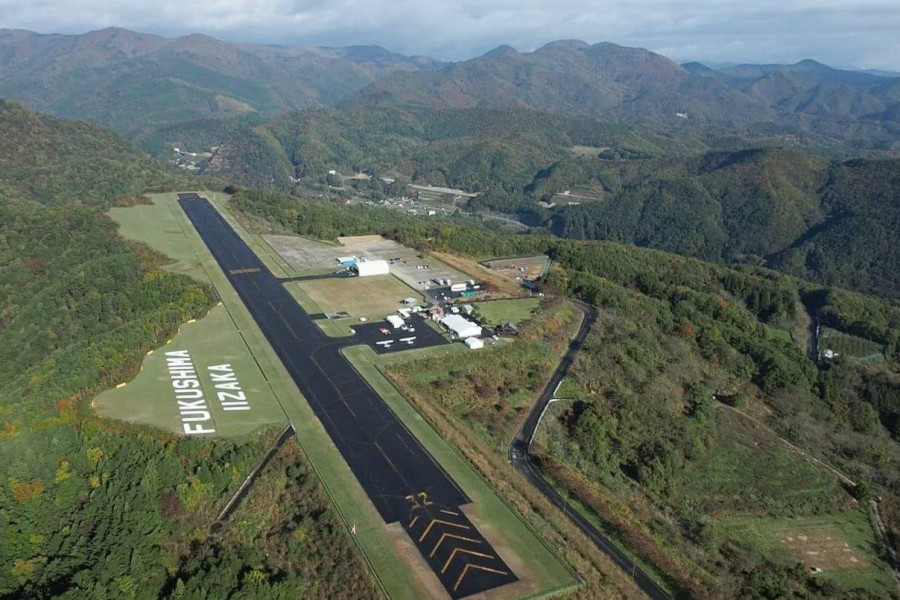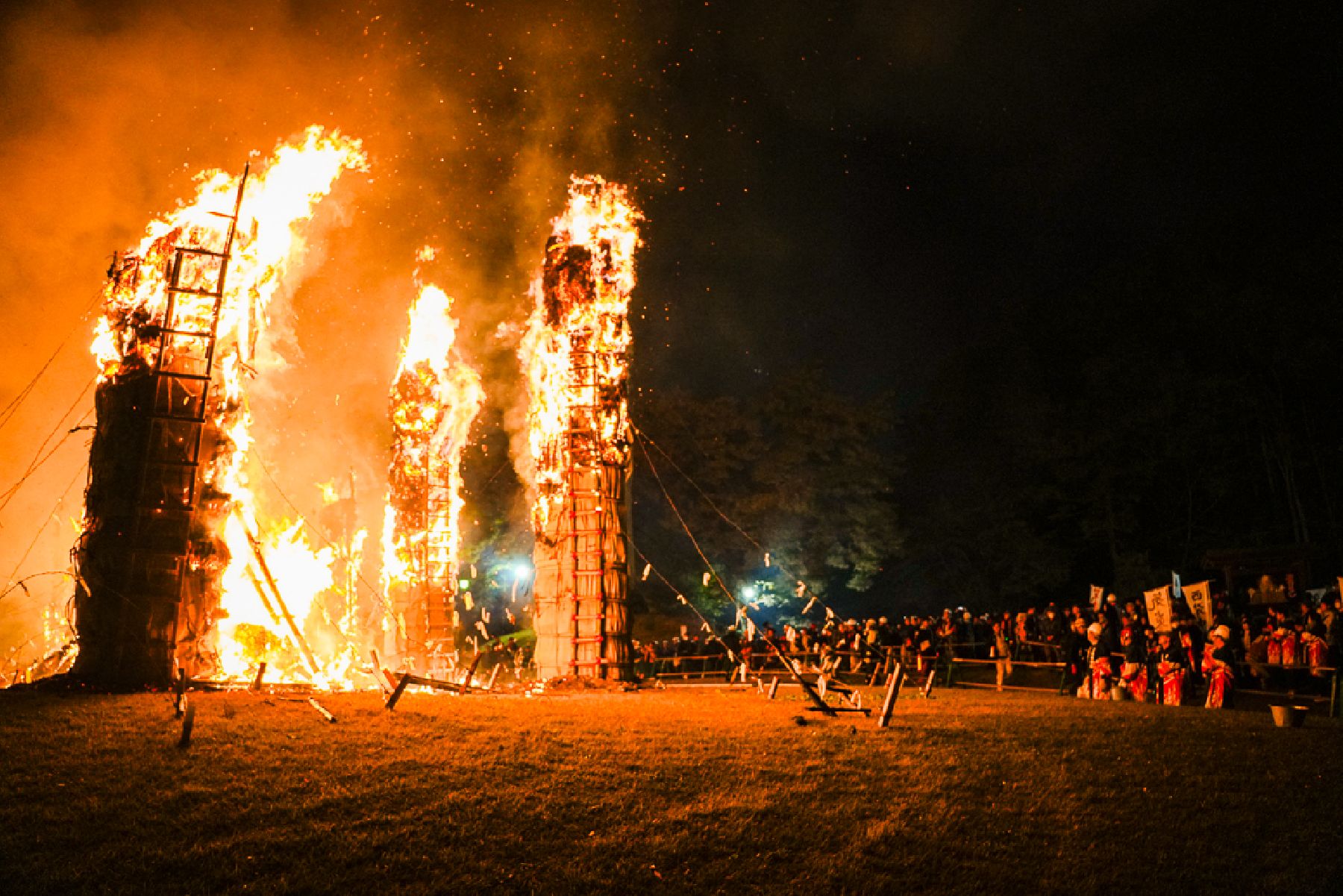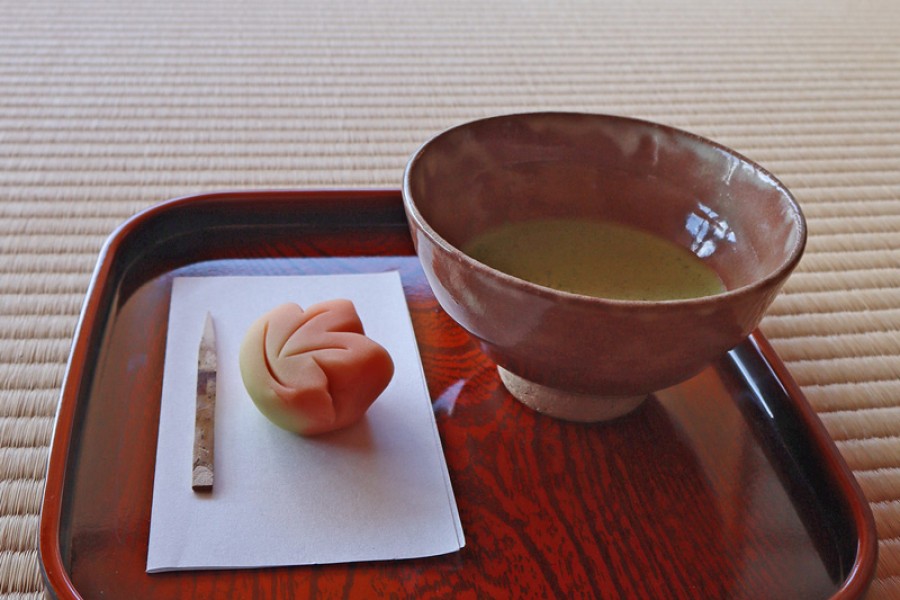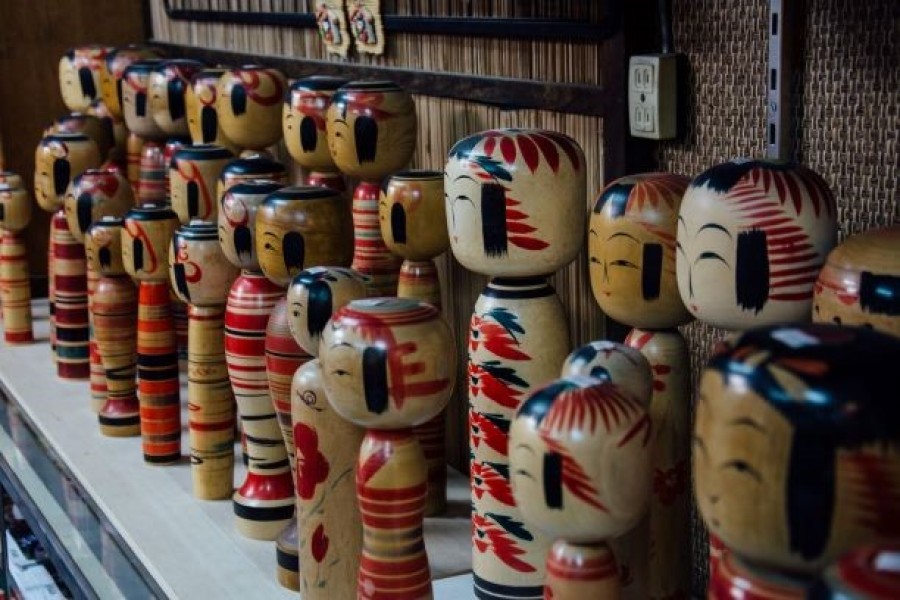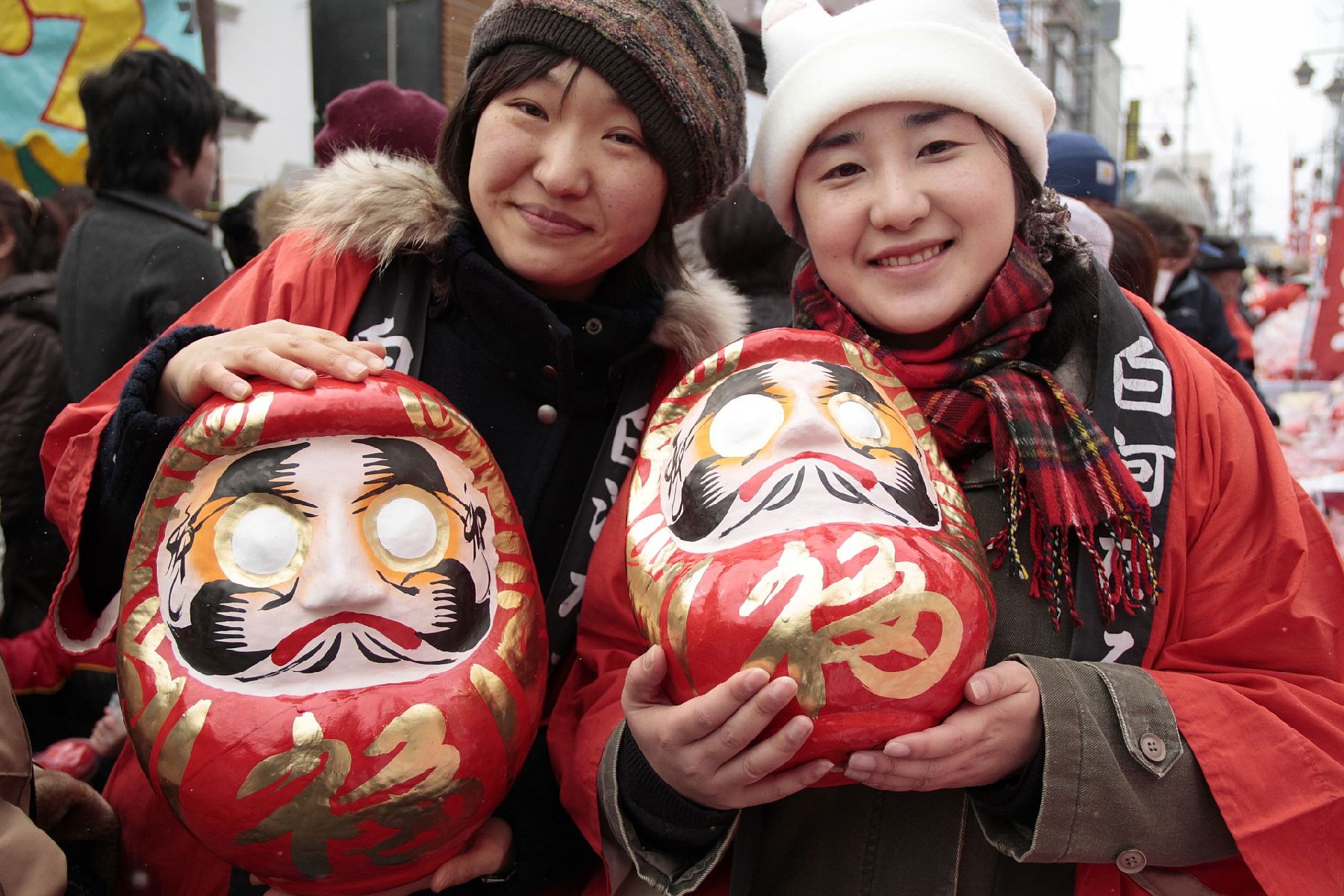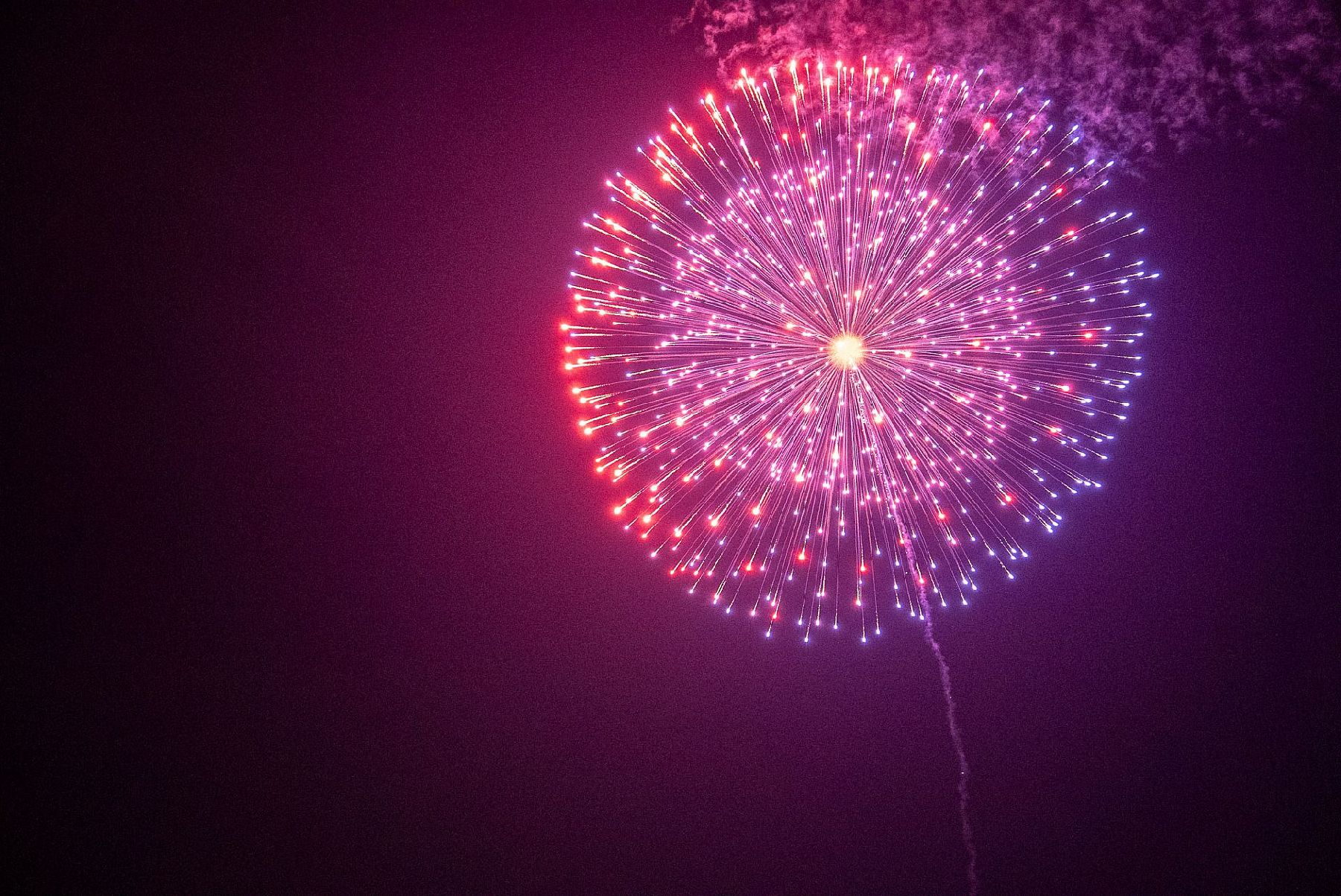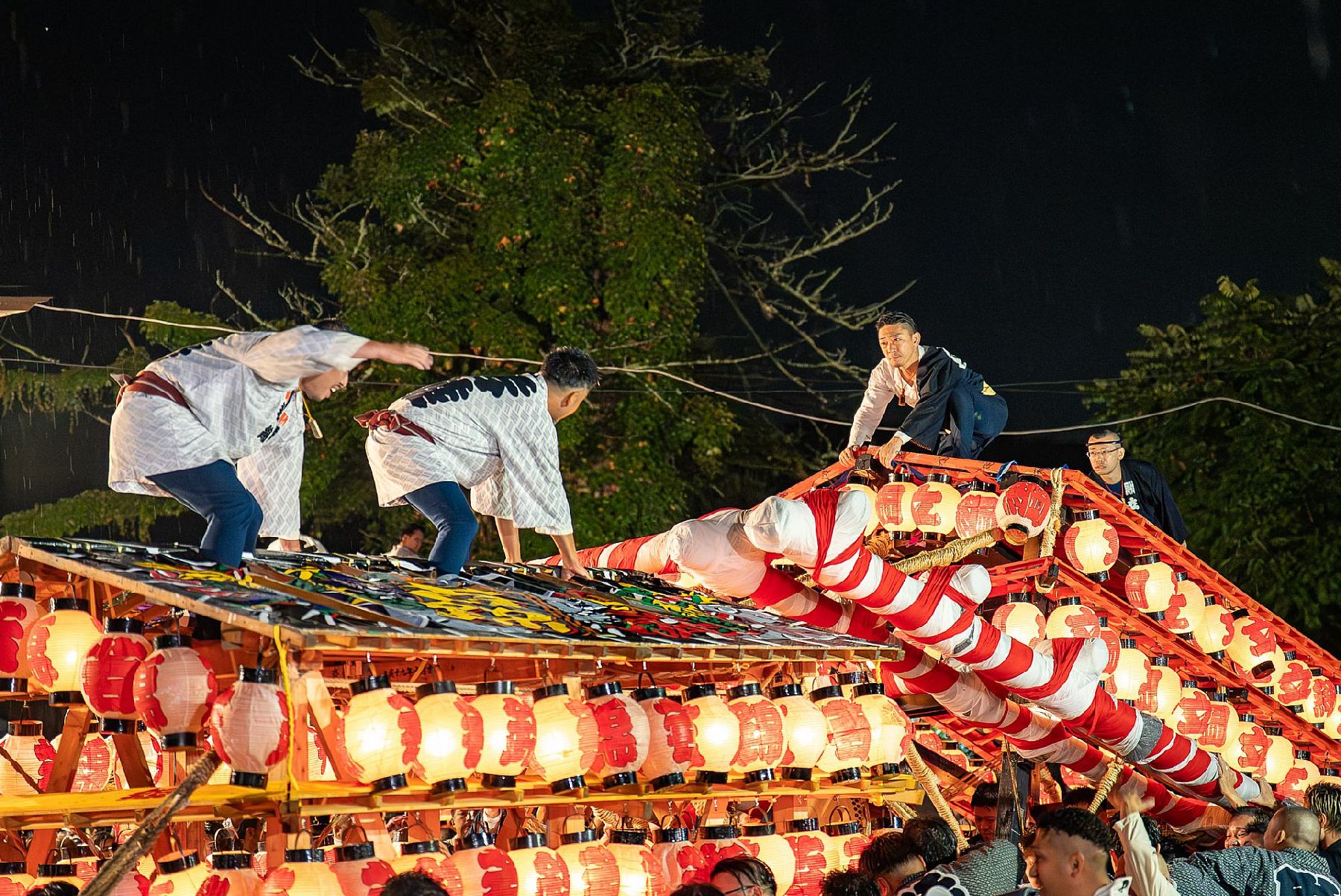With a history stretching back over 400 years, the Taimatsu Akashi torch festival in Sukagawa City is one of the three major fire festivals in Japan. As the night grows darker and the bonfires flare brightly here and there around the venue, groups of local junior high and senior high school students march through the town carrying 30 8-meter-long wooden torches called Hon-taimatsu, which they created by themselves, followed by a group of young men carrying the huge wooden torch called the Dai-taimatsu (10 meters long and weighing about 3 tons), and a group of women carrying a smaller wooden torch called the Hime-taimatsu (6 meters long and weighing 1 ton). These torches are carried to the top of Mt. Gorozan.
There is also a wooden frame depicting Sukagawa Castle and a group of samurai warriors. As the drummers from Oushu Sukagawa Taimatsu-Daiko Hozonkai powerfully beat their Taimatsu-Daiko drums, the torches and the wooden frame are lit with a sacred fire carried up by a group of runners from Nikaido Shrine. The whole mountain looks as if it is on fire. The combination of fire and the beating of the drums is reminiscent of the days in the Warring States period. Local students form chanting squads to cheer on their torch as it burns - this main section with the flaming torches takes around an hour.
In recent years, this traditional event has become well known as a participatory festival, allowing neighborhood associations, local elementary school pupils, and tourists to join the parade to Mt. Gorozan, each carrying a thin torchwood called a Sho-taimatsu (10 cm in diameter).
2024 ROUTE MAP IN ENGLISH
The schedule for the 2024 festival was as follows:
11:00 Midorigaoka Park Grass Square
Food and drink corner
13:00-16:00 tette
Small torch making corner
Note: After making your torch, you can join the small torch procession at 17.15.
13:00-16:00 Taimatsu Street Sukagawa Shinkin Bank Head Office (Parking Lot)
Commemorative photo with warriors in armor
Free Sengoku Nabe (pork soup) while stocks last
Sale of agricultural products
Shizuoka City Specialty Products Corner
Taimatsu Akashi Historic Site and Battlefield Walk Meeting Point (15:15)
Karate demonstration
13:30-14:10 In front of Yoshida Clinic on Taimatsu Street
Torch presentation
14:00 Torch Street Miyasakicho area
Sukagawa First Junior High School torch parade start
17:30-17:45 Nikaido Shrine
Sacred fire offering ceremony (receiving the sacred fire to light the torch)
17:00 (scheduled) Myoken Children's Park
Local organisations torch procession starts
17:15-18:00 Miharashibashi Parking Lot
General torch procession starts
Please participate with small torches made at the small torch crafting corner.
Small torches will also be available for purchase (500 yen each, limited to 100)
18:00-19:45 Mt. Goro Special Stage
Taiko drum performances
18:30 Mt. Goro main festival area
The large torch and 20 main torches are lit in sequence.
